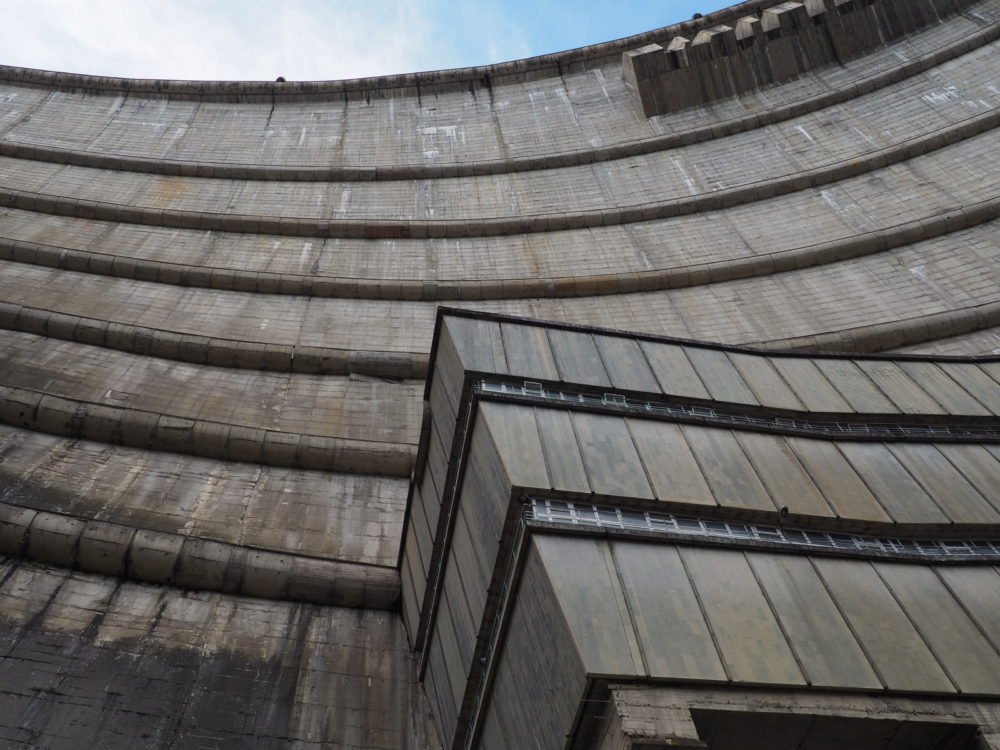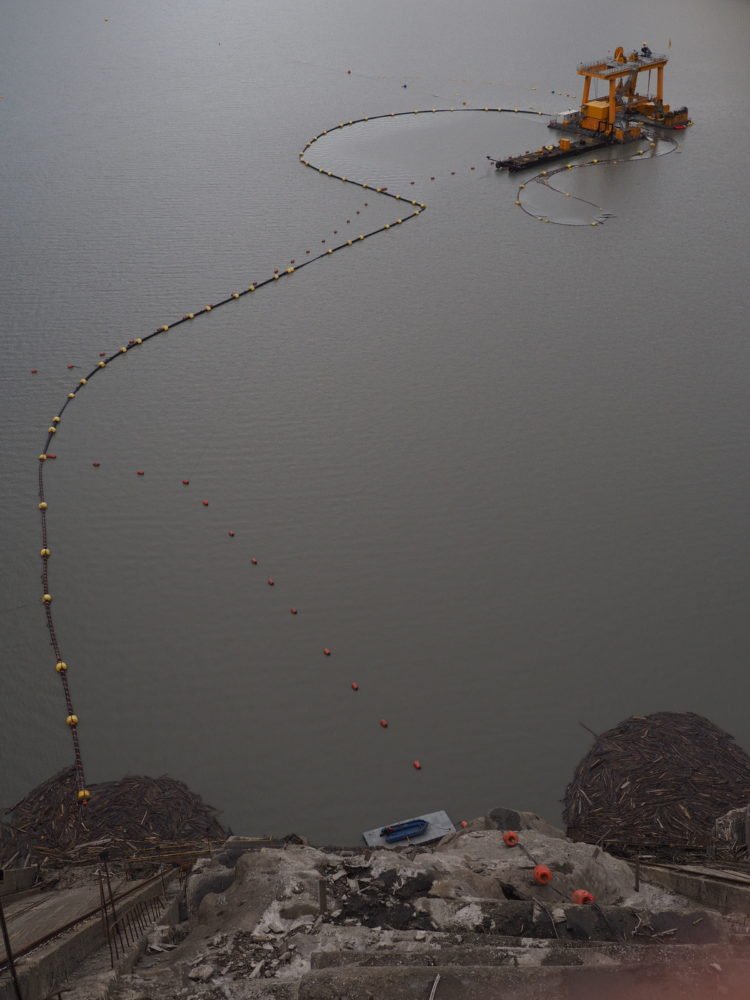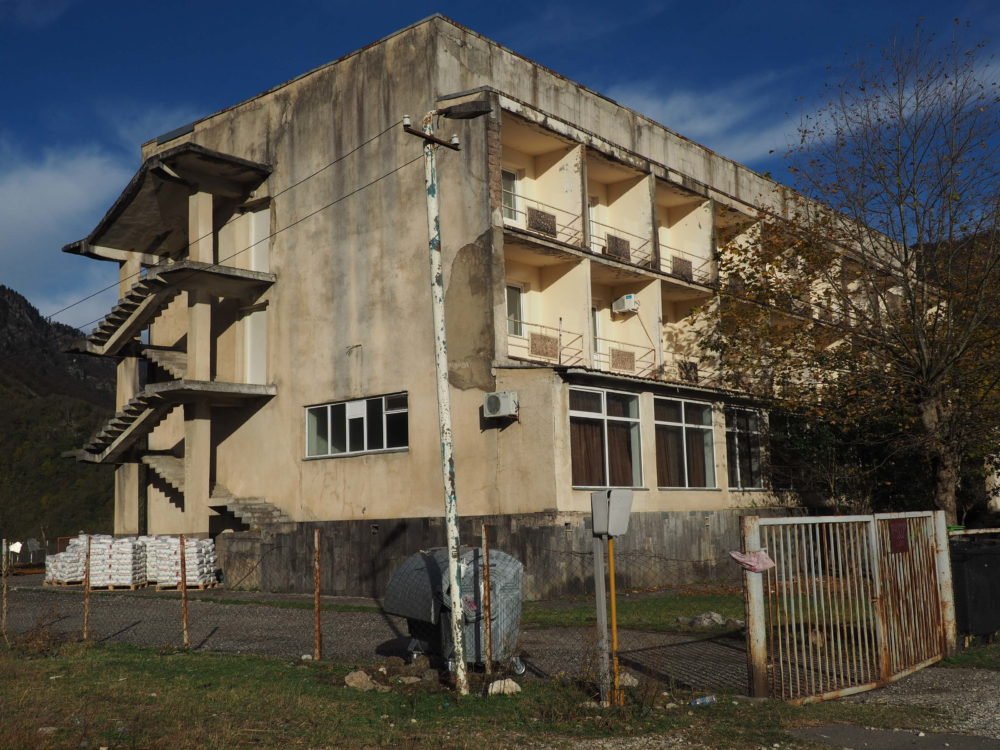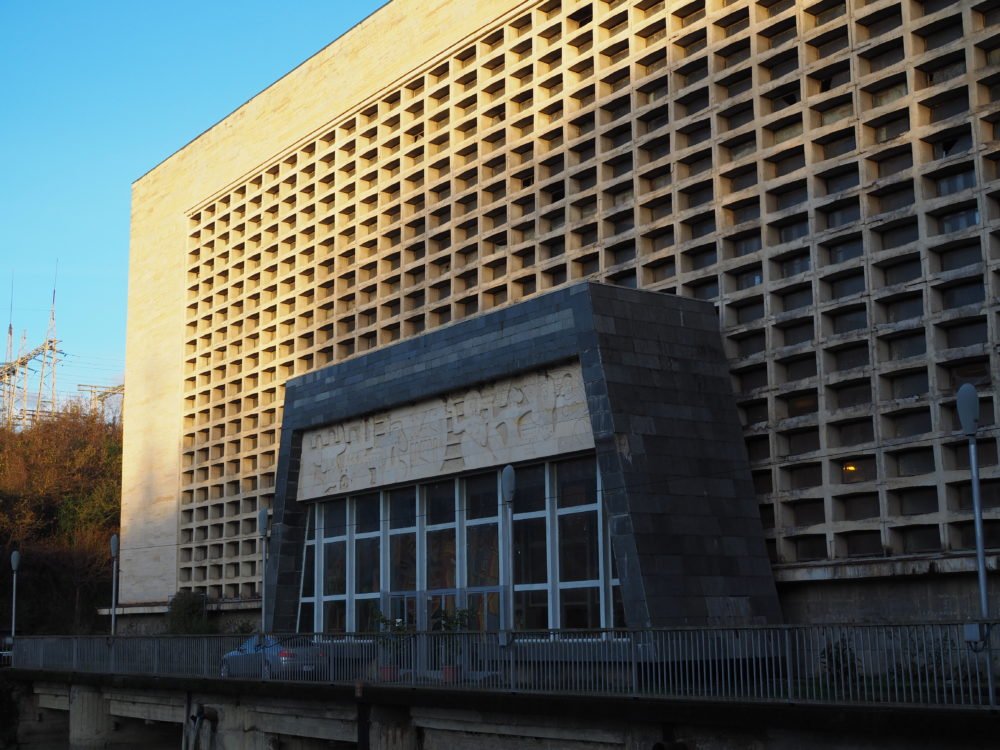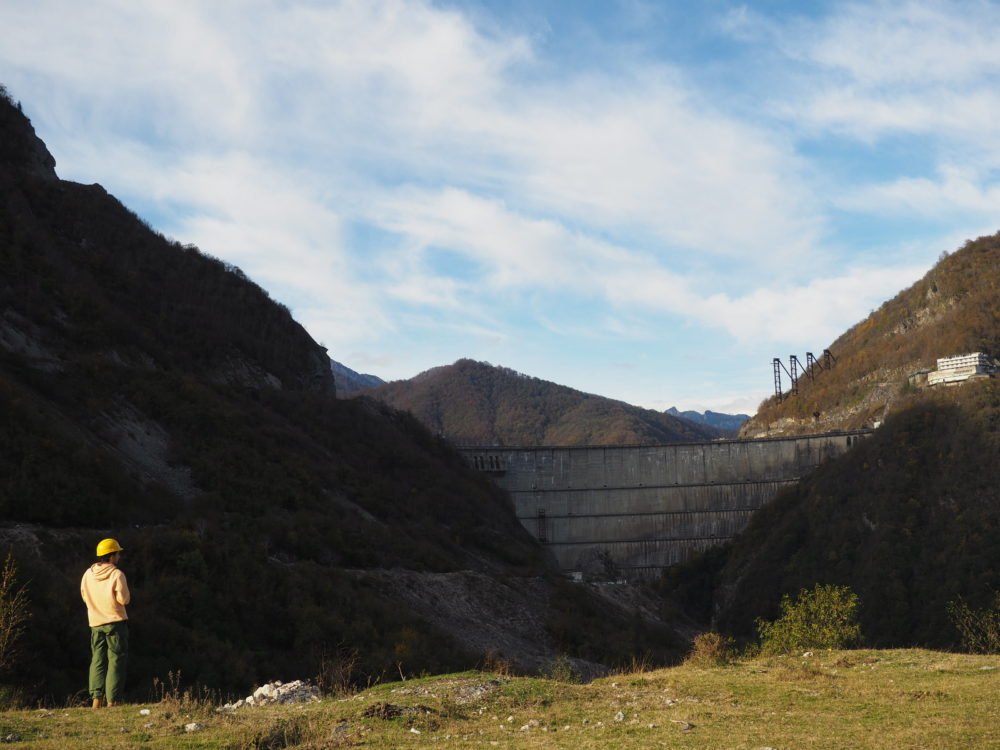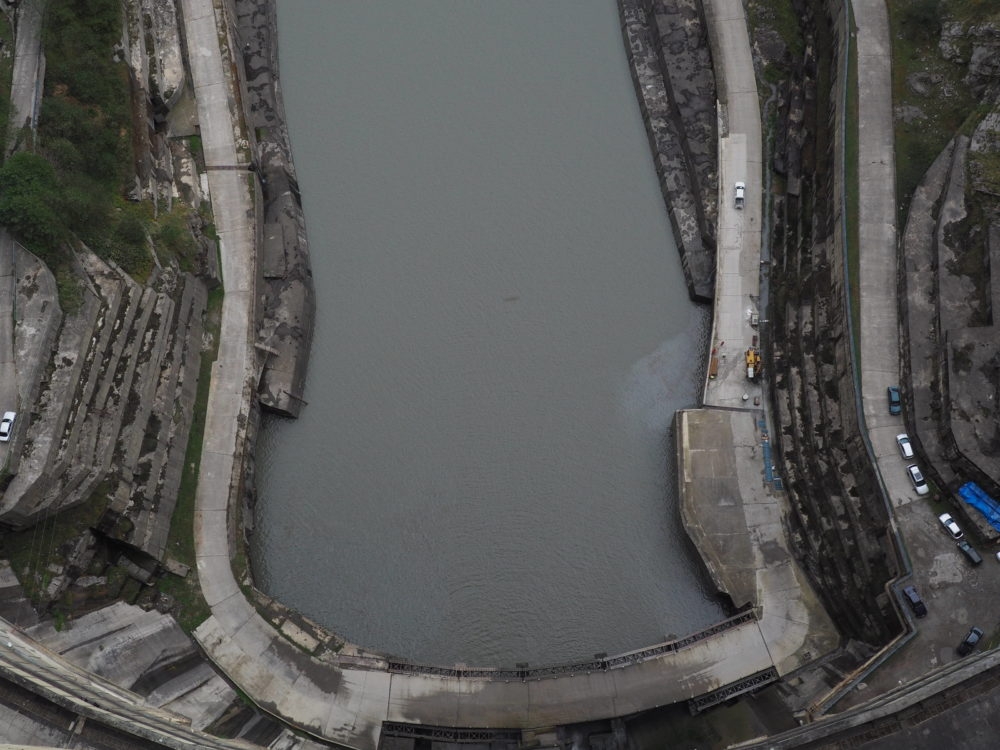
In the beginning of 20th century Niko Nikoladze, publicist and intellectual, noticed the power potential of the Enguri River in the North-West Samegrelo region of Georgia and sought to build a hydropower plant there, considering the future gains the project would bring to the country. While his vision was correct, sceptics perceived it as an unachievable project.
Indeed, from any angle the scales and brutal architectural features of the Enguri Dam are mesmerising. It is no surprise it seemed unachievable to build such a massive and sophisticated concrete beast before WWII. Nevertheless, Nikoladze’s vision was strong enough, and construction of the Enguri Hydro Power Plant (HPP) started in the 1960s, becoming operational in 1988. The plant is 271.5 metres tall, the largest construction in the Caucasus and seventh in the World, with a capacity of 1.1 million cubic metres of water.
Today, the Enguri Dam in Samegrelo offers excursions for those interested. My journey through the Enguri Hydropower Plant began at the dam; the guide provided a thorough tour. Mid-excursion, we went to the start of the tunnel which provides water to the Abkhazian side’s turbines, generating electricity. The tunnel looked like a channel that did not recognize borders.
After a couple of weeks, I continued my journey on another side of the HPP ensemble – to the Vardnili Hydroelectric Power Station (HES-1), in the village of Pirveli Gal/i, Abkhazia. It was Christmas morning. The HPP was brimming with silence; the sole sound and power of the water buzzing was astonishing. A couple of men smoked cigarettes outside the building in front of the entrance’s exquisite, rarely extant mosaics.
Enguri HPP is a primary source of electricity for Abkhazians and Georgians. Comprising a series of hydroelectric facilities, these include the water reservoir near Jvari village in the Samegrelo region, the dam-diversion setup of the main Enguri HPP, with the electricity-generating infrastructure, the installation of Vardnili HES-1, and three channel installations of Vardnili HES: -2, -3, and -4 in the Gal/i district in Abkhazia, positioned along the tailrace leading to the Black Sea.
“Since the war in Abkhazia in 1992-1993, the Enguri HPP resources had to be divided between the Abkhazian and Georgian sides, as here (Gal/i district) we have turbines, and the main water resource is in Jvari. This makes Enguri HPP a particular place where Abkhazians and Georgians work together despite the conflict,” said Ramazi (Kobalia Rezo), 67, who has worked at the dam since 1985.
According to the 1992 agreement, Abkhazia gets 40% of the electricity supply, and the rest of Georgia gets 60%; however, in the late 2010s, Abkhazian consumption increased significantly, driven partly by bitcoin mining.
Rezo recalled the junior years of his life when Vardnilhesi I, where his father and grandfather had worked, was a vibrant place.
“Even though I grew up among the technicians, engineers, and physicists, I never wanted to work here. Moreover, I escaped! (he lets out a contagious laugh) But my father brought me back from Tbilisi. Now, I am working as a dispatcher.”
Many speak with regret and hopelessness about the fate of Vardnilhesi 2, 3, 4 in the Gal/i district.
Badri (Zhorzhi Pipia), 58, who works at the Gal/i office of the Enguri HPP, said that while there were rumours many years ago about revitalising these channel installations, nothing has happened.
“Locals or someone else has robbed iron, bricks, and maybe some electronics from these installations. It is heart-breaking for me to watch such a big potential just standing still.”
On the way to Vardnilhesi 2, we were not allowed to take photos by the guard, but he eagerly showed us around. The main building and the surrounding area was overgrown by bushes.
“There is nothing much to see,” he said, “Here are cows, concrete, and water.” He said he believes this potential will be fully utilized one day.
Vakho, an inhabitant of the village of Pirveli Gal/i, where Vardnilhesi 1 is located, witnessed how the town was growing while the dam was fully functioning. His mother worked there as a financial specialist and his father worked as one of the leading electronic engineers.
“Thousands of people per year were coming to the village from all over the Soviet Union for swimming training. I knew by heart each corner of this construction (dam) and what was inside. I would take my fellow swimmers there and show them around. Maybe this was one of my favourite activities! Today, it is sad to observe all this. Yes, I have great colleagues, and our relations are very friendly, but the adrenaline and inspiration that work can bring to one doesn’t exist. Additionally, because Gal/i is where it is, we are isolated from everywhere.”
